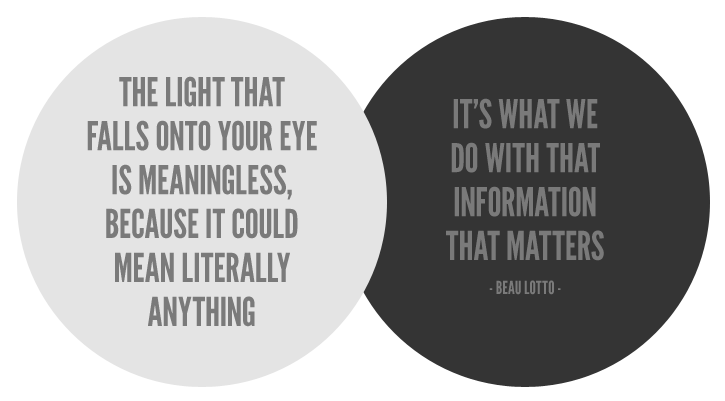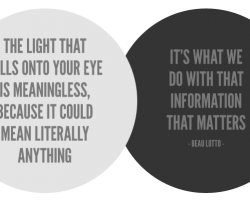
You know all about optical illusions in colour if you’ve ever tried to pick a paint colour for your house. Or if you’ve had an argument about whether your shirt is black or blue or purple.
In his TED talk, Beau Lotto shows us some fascinating optical illusions that reveal just how much what we see is influenced by its context and our definitions of normality. What we see is determined less by the actual sensory information hitting our eye, and more by how we perceive the light based on our surroundings and previous experience.
It’s funny how many times Lotto says, when identifying a colour on his slides, “Let’s call it, ______”. When a colour’s surroundings change, the colour can change categories completely. An orange dot appears brown, the gray cube bright blue.
Graphic designers spend much of their time considering illusions, making mere pixels and ink appear to be actual objects, photos or living things. It’s important to consider, when designing anything, how it will be perceived by the audience viewing it in the medium in which it will be encountered.
In optical illusions it seems there’s also something to be learned about how we perceive other things in our world as well. Other people, their actions, our beliefs and ways of thinking, these are all heavily influenced by their context, our own past experiences, and our definitions of normality.
What is it that you see?
Check out more of Beau Lotto’s optical illusions here.
The brain didn’t evolve to see the world as it is – we can’t. Instead, the brain evolved to see the world in the way it was useful to see it in the past. And how we see is by continually redefining normality. – Beau Lotto
